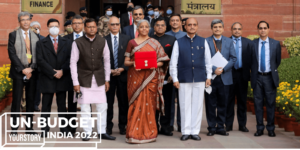The wheel never stopped turning since the time it was invented almost 5,500 years ago. From horse drawn-carriages and steam engines to drone taxis and self-driving cars, mobility has come a long way.
Today, urban mobility is a thriving space with unimaginable potential. How cities move their people is a prominent factor that determines their quality of life and preserves the essence of the urban environment.
Many cities across the world are already leveraging the Internet of Things (IoT) and big data analytics to tap into the behavioural patterns of their citizens and harness this intel to power last mile connectivity.
Ride-hailing and vehicle-rental entities have played a significant role in bridging the gap between city dwellers and public transport by introducing shared mobility into the equation.
It is a welcome change to observe that ownership is starting to take a backseat in the automotive sector compared to convenience and sustainability. This behavioural shift coupled with cutting-edge technology is going to help city planners structure and integrate seamless mobility into their systems.
Here are the key industry and technology trends that will pave the way for this integration:
Electric Vehicles (EV): The Spark of hope
EVs are driving forth the possibility of mobility with minimal disruption. There were 10 million electric cars on the roads globally in 2020. Though electric car registrations have increased by in the past year, the real silver bullet of sustainable mobility is going to be e-bikes. Thanks to the enhanced lithium-ion batteries, improved performance and affordable prices, the e-bike movement is steadily taking over the world.
Thanks to the FAME II subsidy hike recently announced by the Department of Heavy Industries (DHI), Indian e-two-wheeler manufacturers will be able to up their game and get on par with their Internal Combustion Engine (ICE) counterparts in the market.
Decentralised energy systems: More power to the people
Though many people are aware of the positive impact of EVs on the environment, they are hesitant to get onboard with battery-powered vehicles due to the lack of charging stations.
But if the cost of renewable energy goes down, intermittent distributed generation will make up a notable share of the world’s energy distribution. This will enable cheaper and cleaner energy distribution, allowing EV owners to recharge their vehicles from their local solar or electric charging points.
Shared mobility: Sharing the road and the load
Shared mobility is not solely restricted to ride-hailing services; vehicle rental apps too play a part in this shift as they enable large client pools to travel around the city using a limited number of rented vehicles.
In the last one decade, global and national brands have quickly picked up pace to help city dwellers move around with ease.
Mobility-as-a-Service (MaaS): A movement for movement
MaaS is a trend that is gaining traction along with the rent-over-buy movement because people are starting to view transportation as an experience and not a luxury.
MaaS can be defined as a system or platform where all transportation is viewed as a single unit. It would incorporate all the current practices of paying for bus/train tickets using a phone or hailing a ride using a rental app into a centralised system.
Micromobility: Little actions, huge impacts
Micromobility is shaking up urban transportation worldwide. In many populous cities, people are choosing to travel via walking, cycling, or shared mobility to escape congestion on roads. This is where micromobility comes in—it refers to the small-scale, short-term transportation alternatives people can opt for to move around the city with ease.
Augmented and Virtual Reality (AR and VR): Imagination put into action
AR makes it possible for users to get instant and accurate information by scanning their phones or wearable devices and extends the possibilities of frictionless mobility interactions like booking tickets, leaving a review, or personalising the purchase of a vehicle.
VR, on the other hand, can help city planning experts perfect their research and prototyping with the help of interactive design visualisations and life-like simulations.
3D printing: manufacturing responsibly
Sustainable mobility shouldn’t be limited to vehicles shifting to alternative energy options alone, it should also extend to the manufacturing process. Additive manufacturing enables the creation of lighter, stronger, and eco-friendly vehicle spare parts. This will not only enable upcoming startups to experiment with low-cost, durable materials but also facilitate rapid prototyping.
Though the mobility and the automotive sectors have been drastically hit by the repercussions of the pandemic, in many other ways, this adversity has helped thought leaders to aggressively innovate and reinvent themselves. In fact, 2020 witnessed a startup surge of 24.3 percent, owing to the existential urgency triggered by all the uncertainty.
In the coming years, urban mobility will only get faster, better, and more versatile, all the while keeping sustainability at the forefront. This is the right time for key players to identify new opportunities and accelerate innovation.
(Disclaimer: The views and opinions expressed in this article are those of the author and do not necessarily reflect the views of YourStory.)







![Read more about the article [Techie Tuesday] The 21-year-old student-entrepreneur building an Indian self-driving vehicle](https://blog.digitalsevaa.com/wp-content/uploads/2021/06/TechieTuesday-01-1622542941340-300x150.png)


![Read more about the article [Funding alert] Hubilo raises $23.5M in Series A round, to hire 150 people](https://blog.digitalsevaa.com/wp-content/uploads/2021/02/Imageryil-1614180116561-300x150.jpg)